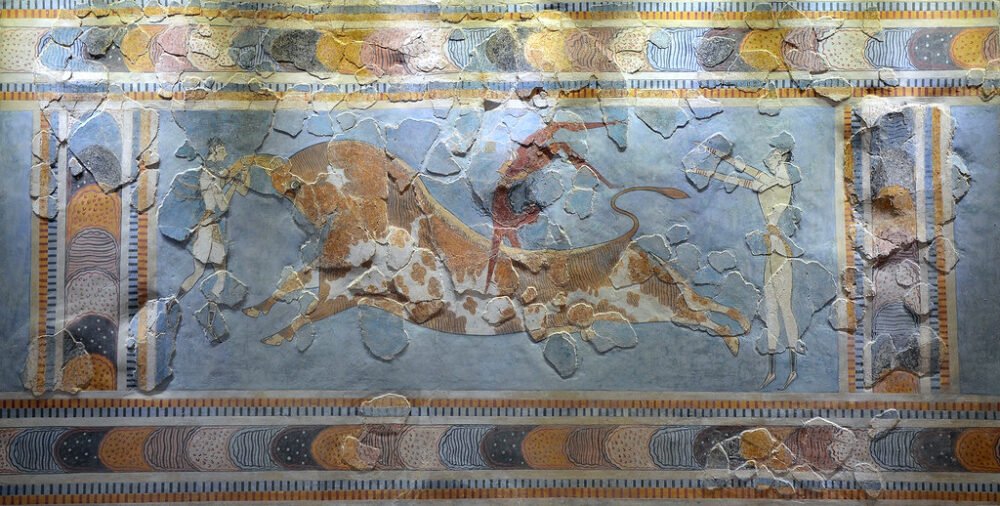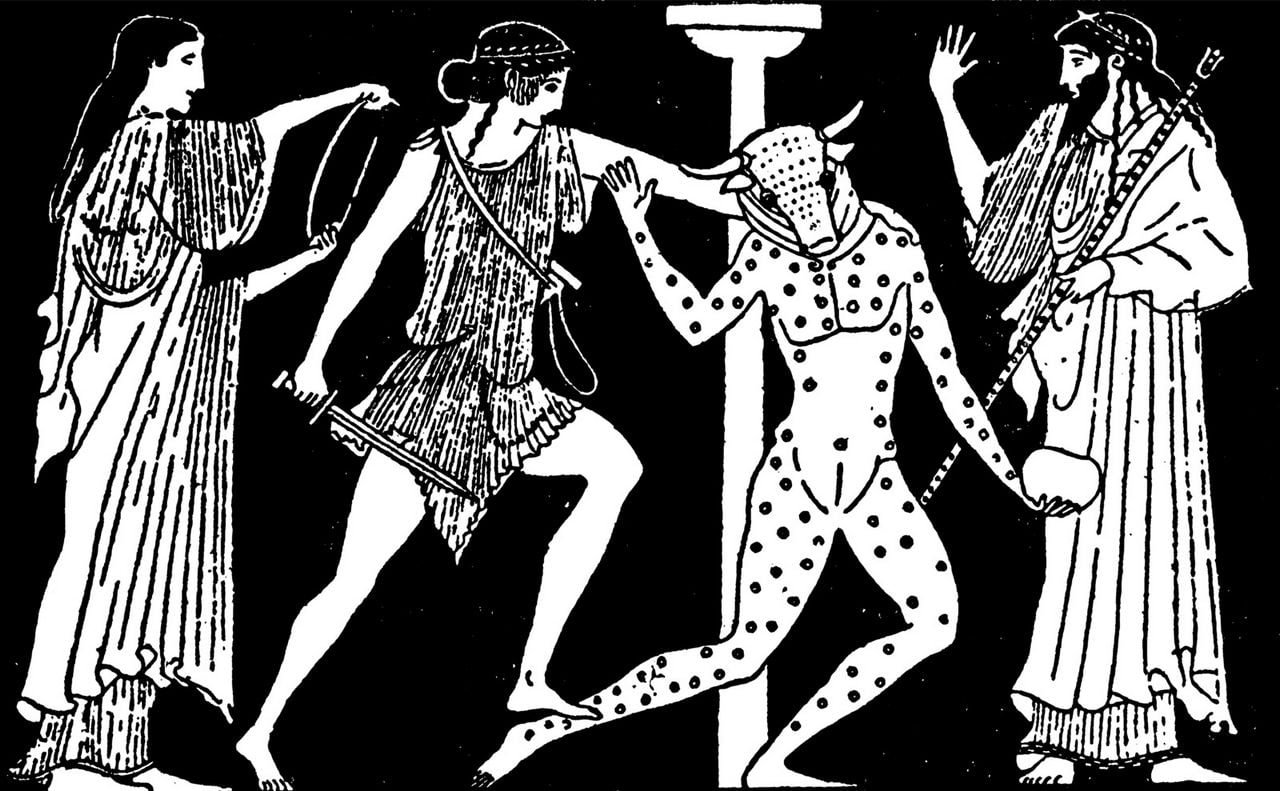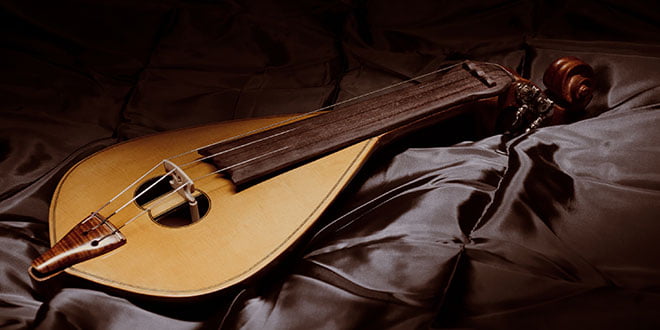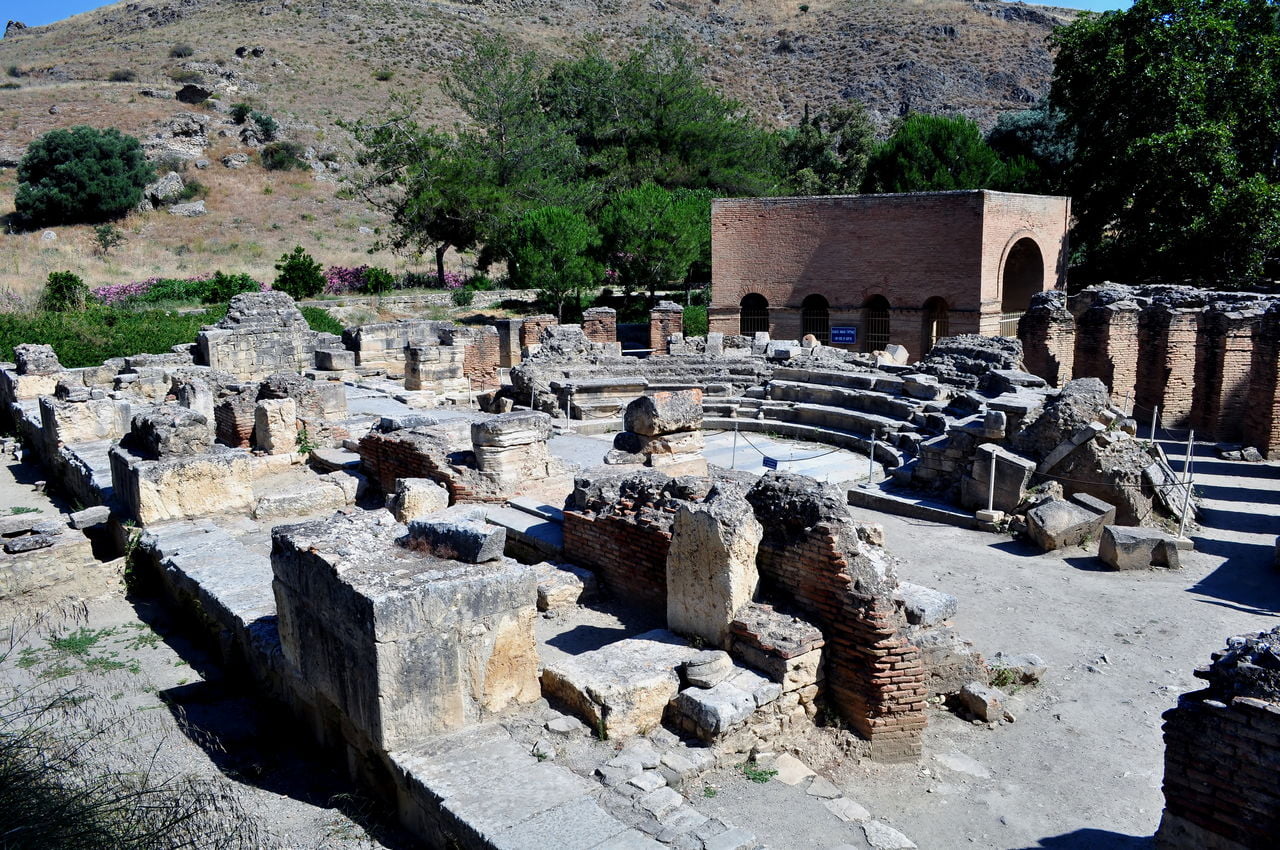Bull Leaping in Minoan Crete
Bull-leaping in Crete, also known as taurokathapsia, was a significant part of the Minoan culture during the Bronze Age. This ritualistic sport involved an acrobat leaping over the back of a charging bull, often interpreted as a depiction of a rite performed in connection with bull worship.

The Bull-Leaping Fresco, a notable work of art from the Minoan period, vividly depicts this ritual. The fresco features three figures: two with a lighter skin tone standing on the outside of the frame, flanking a charging bull in the middle. On top of the bull is a figure of darker skin performing a leap over the bull’s arching back.
The Minoan Bull-leaper, a bronze sculpture in the British Museum, is the only known largely complete three-dimensional sculpture depicting Minoan bull-leaping. The sculpture depicts a leaper grabbing the bull’s horns, executing a backflip onto the bull’s back, and then dismounting. However, it has been speculated that the leap depicted is practically impossible and may be an exaggerated depiction. [Source]
Bull-leaping was not only a sport but also a part of religious and ceremonial rites. Athletic games like boxing, wrestling, and bull-leaping were indispensable to every religious feast in Minoan Crete. These activities were likely part of a ceremonial initiation rite of noble youths or a type of religious spectacle organized by the palace.
How Bull Leaping was performed
- Based on art depictions, bull leaping consisted of an acrobat grabbing the bull’s horns, using the momentum from the bull’s upward motion to flip over its back, and landing on the ground behind the bull.
- Three main techniques have been identified from the depictions:
- Grabbing horns, somersaulting over bull’s head, landing on back, then dismounting behind bull.
- Diving over bull’s horns without touching them, pushing off bull’s back into a backward somersault.
- Depicted in mid-air over bull’s back, facing same direction as bull.
- The acrobatic skills required were considerable, suggesting specialized training.
Who performed Bull Leaping
- Based on their elaborate hairstyles, jewelry, and decorative clothes, bull leapers appear to be elites/nobility rather than commoners.
- Both male and female acrobats are depicted in the art, sometimes with ambiguous or mixed gender characteristics.
- The participation of women is remarkable given typical gender roles in other ancient societies.
Purpose and Significance
- Bulls were sacred animals in Minoan religion, associated with fertility and power.
- Leaping over the bull may have been a symbolic mastery over nature.
- It may have been part of an initiation rite for youths.
- It was likely performed before audiences at religious festivals, probably in the central courts of Minoan palaces.
- The frescoes suggest bull leaping commemorated important events and was a spectacle for the community rather than private ceremony.
References
- [1] Bull-Leaping Fresco, Heraklion Archaeological Museum
- [2] Marinatos, N. (1993). Minoan Religion: Ritual, Image, and Symbol. Columbia, SC: University of South Carolina Press.
- [3] McInerney, J. (2011). Bulls and Bull-Leaping in the Minoan World. Expedition Magazine, 53(3), 6-13.
- [4] German, S. (2015). Bull-leaping fresco from the palace of Knossos. Khan Academy.
- [5] Younger, J.G. (1976). Bronze Age Representations of Aegean Bull-Games. American Journal of Archaeology, 80(2), 125-137.
- [6] Hillbom, N. (2008). Minoan games and game boards. Opuscula, 1, 157–168.
- [7] Big Think (2019). The mystery behind Minoan bull-leaping.
- [8] Decker, W. (2004). Vorformen griechischer Agone in der Alten Welt. Nikephoros, 17(4), 9-25.
- The Island of Crete
- Heraklion
- Rethymno in Crete
- Chania
- Agios Nikolaos
- The Music of Crete
- Myths of Crete
- Bull Leaping in Minoan Crete
- Gortys, the Roman Capital of Crete
- Chrissi Island in Crete
- Eleftherios Venizelos
- Zorba the Greek
- Wind and Solar Energy in Crete
- Skinakas Observatory
- Rock Climbing in Crete
- A Farmer in Elounda
- The Allure of Crete’s 5 S’s
Read more:





